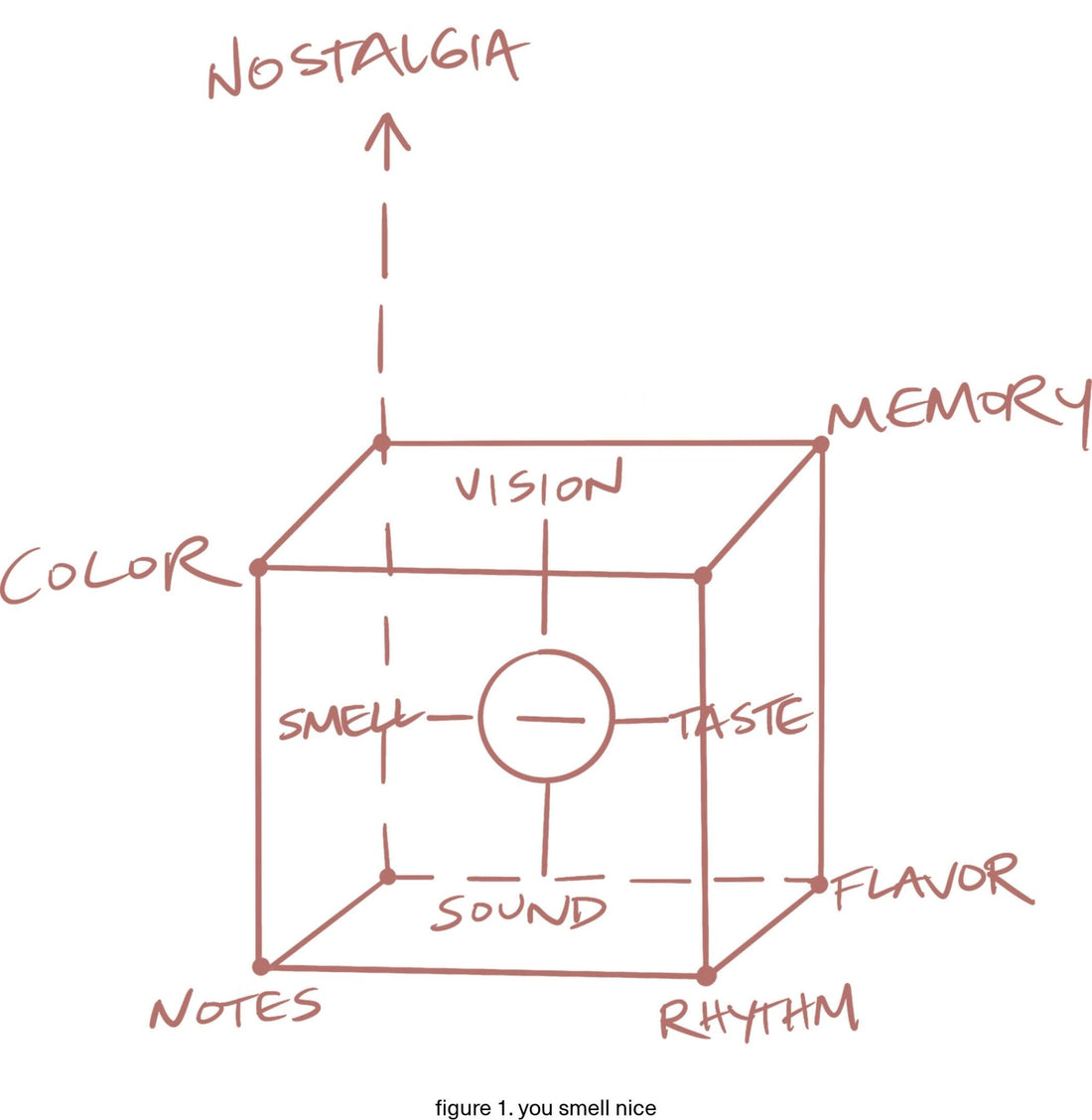
What it’s like having Synesthesia
Share
I’ve always assigned colors to things.
Love Me or Leave Me by Nina Simone sounds like a muted cornflower blue with a spattering of violet, pale pink, and true yellow.
The smell of freshly baked sourdough is a rich, honey orange with sparkles of gold.
Friendly people emit a warm, silky, opalescent white.
I didn’t know this wasn’t a universal experience. Back in winter 2018, I was developing our “529” scent on intuition and a bunch of questions. And at the beginning of 2020, when I was explaining my scent development process for Redoux, a friend of mine asked me if I had a condition called “synesthesia.” I had no idea what that was, so I said no, to which she promptly responded to with “You absolutely do.”
According to PsychologyToday.com, the condition synesthesia is a neurological condition in which stimulation of one sensory or cognitive pathway (for example, hearing) leads to automatic, involuntary experiences in a second sensory or cognitive pathway (such as vision). Simply put, when one sense is activated, another unrelated sense is activated at the same time.
While nearly any sensory combination is possible in synesthesia, here are some of the most well-known ways it manifests (sourced from psychologytoday.com):
- Auditory-tactile synesthesia occurs when a sound prompts a specific bodily sensation (such as tingling on the back of one’s neck).
- Chromesthesia occurs when certain sounds (like a car honking) can trigger someone to see colors.
- Grapheme-color synesthesia occurs when letters and numbers are associated with specific colors.
- Lexical-gustatory synesthesia occurs when hearing certain words triggers distinct tastes.
- Mirror-touch synesthesia has been described as a kind of supercharged empathy: A person feels as though they’re being touched if they witness it happening to someone else. It can be benign—such as an observed advantage in recognizing facial expressions—or burdensome, as in the case of a neurologist who felt intense pressure in his chest when he saw a patient receiving CPR.
- Number form occurs whena mental map of numbers involuntarily appears whenever someone thinks of numbers.
- Ordinal linguistic personification is a kind of synesthesia where ordered sequences (e.g., the days of the week) are associated with personalities or genders.
- Spatial sequence synesthesia involves seeing numbers or numerical sequences as points in space (e.g., close or far away).
I personally experience mainly chromesthesia (I see colors when I hear, taste, and smell things) and a bit of auditory-tactile synesthesia. For me, it even goes a bit further, where my memories and feelings associated to them have a color attached to them.
I’ve struggled trying to explain this experience to people, because it just *is* for me. For example, imagine trying to describe to someone who is blind, the experience of being able to see. Not what you are seeing, but that actual act of seeing. Not so simple. In an attempt to try and capture how my senses are connected and intermingle with each other, I built a framework based on how which types of stimuli trigger each sense and then translates into another expression tied to another sense. It’s not perfect, it’s not all encompassing, but is the clearest way I can articulate what I am experiencing to someone who doesn’t have synesthesia.
So, when people ask, “How do you develop your scents?” I point them in the direction of this model, which I’ve come to call our “Scent Mechanics.” These mechanics support a specific scent narrative we are trying to capture, and deliver the experience through the medium of our choice. The process is featured on our first shirts, which were designed by Kim Nguyen. I wrote another post about how to interpret it. I hope you have fun tracing over it—you may even find that you have synesthesia, too (if you do, let me know)!

